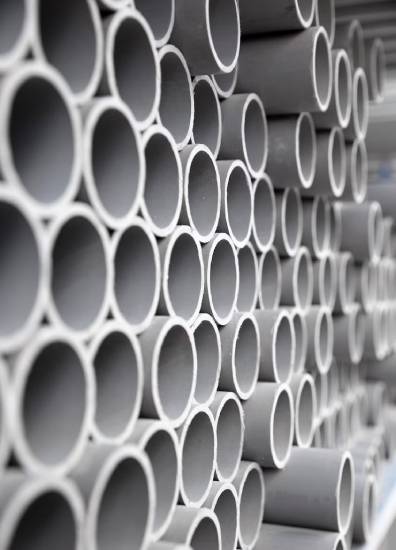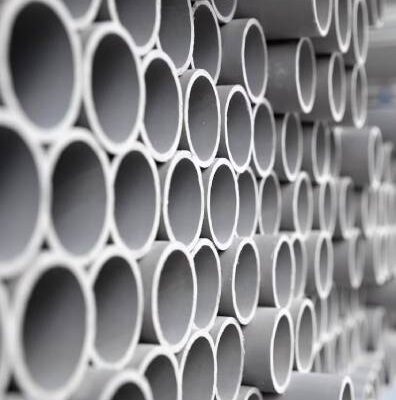
Industrial projects demand the use of materials that deliver consistent performance under harsh conditions. Engineers face mounting pressure to select components like 321 stainless steel tubes that minimize downtime while maximizing operational lifespan. When critical systems fail due to material degradation, the costs spiral beyond initial replacement expenses.
The 321 stainless steel tube has emerged as a reliable solution for high-temperature applications across multiple industries. This chromium-nickel alloy contains titanium stabilization, which prevents carbide precipitation during welding and extended heat exposure. Plant managers increasingly specify this grade for systems operating between 800°F and 1500°F.
Superior Oxidation Resistance in Extreme Environments
Standard stainless steels often fail when exposed to high-temperature oxidizing atmospheres. The 321 grade contains titanium additions that form stable carbides, preventing chromium depletion at grain boundaries. This mechanism maintains the protective oxide layer that shields the base metal from atmospheric attack.
Petrochemical facilities report significantly longer service intervals when using 321 tubing in their heat exchanger systems. The material maintains structural integrity in environments where 304 and 316 grades experience rapid degradation. Temperature cycling between ambient and 1400°F presents no operational challenges for properly installed 321 systems.
Aerospace manufacturers rely on this oxidation resistance for exhaust system components. Aircraft engines generate extreme thermal gradients that would destroy conventional materials within hundreds of operating hours. The 321 alloy provides consistent performance throughout extended service cycles.
Exceptional Thermal Stability Under Load
Thermal expansion and contraction create stress concentrations that lead to premature failure in many piping systems. The 321 stainless steel tube exhibits minimal dimensional changes across wide temperature ranges. This stability reduces mechanical stress on joints, supports, and connected equipment.
Power generation facilities experience fewer thermal fatigue failures when using 321 tubing for steam distribution systems. The material accommodates rapid temperature changes without developing stress cracks or permanent deformation. Maintenance teams report fewer emergency repairs on systems using this grade compared to standard austenitic steels.
Laboratory testing confirms that 321 maintains yield strength properties at elevated temperatures better than most alternatives. The titanium stabilization prevents grain boundary weakening that occurs in unstabilized grades during prolonged heat exposure.
Enhanced Mechanical Strength Properties
The titanium content in 321 stainless steel provides strengthening beyond what chromium and nickel alone can achieve. This alloy demonstrates higher tensile strength and better creep resistance than 304 or 316 grades at operating temperatures above 1000°F.
Manufacturing facilities processing chemicals at elevated temperatures benefit from this enhanced strength. Reactor vessels and transfer lines maintain pressure ratings throughout their design life without requiring frequent inspection intervals. The material resists stress rupture failure modes that plague other austenitic grades.
Welded joints in 321 tubing retain their mechanical properties after heat treatment cycles. The titanium prevents sensitization, maintaining corrosion resistance and structural integrity in heat-affected zones. This characteristic eliminates post-weld heat treatment requirements in many applications.
Low Maintenance Requirements
Maintenance schedules become more predictable when using 321 stainless steel tubing systems. The material’s resistance to intergranular corrosion eliminates many common failure modes that require emergency intervention. Plant operators report reduced maintenance costs and improved system availability.
The titanium stabilization prevents carbide precipitation during service, maintaining corrosion resistance throughout the operating temperature range. Systems remain serviceable for decades without requiring major component replacements due to material degradation.
Cleaning procedures for 321 systems are less aggressive than those required for carbon steel or lower-grade stainless alternatives. The smooth surface finish resists deposit formation, reducing cleaning frequency and chemical consumption.
Cost-Effective Long-Term Investment
Initial material costs for 321 stainless steel tubes exceed those of standard grades, but life cycle economics favor this premium alloy. Extended service life and reduced maintenance requirements generate substantial savings over the system’s operational period.
Downtime costs in industrial facilities often exceed $100,000 per hour for critical systems. The reliability of 321 tubing reduces unplanned shutdowns and their associated revenue losses. Insurance providers recognize this reliability with reduced premiums for facilities using appropriate high-temperature alloys.
Replacement intervals for 321 systems typically extend three to five times longer than conventional materials in high-temperature service. This longevity reduces labor costs, inventory requirements, and production disruptions associated with frequent component changes.
The resale value of equipment built with 321 components remains higher due to the material’s reputation for durability. End-users pay premiums for systems they know will deliver consistent performance without unexpected failures.
Material Specifications and Standards
ASTM A213 governs the composition and mechanical properties of 321 seamless tubing for high-temperature service. The standard specifies minimum titanium content of five times the carbon content plus 0.70%, ensuring proper stabilization. This requirement prevents sensitization during fabrication and service exposure.
Quality certifications accompanying 321 tubing include chemical composition analysis, mechanical property verification, and dimensional inspection results. These mill test reports provide traceability for critical applications requiring material documentation.
Heat treatment requirements for 321 follow ASTM guidelines to achieve optimal properties. Solution annealing at 1900°F to 2100°F dissolves carbides and relieves residual stresses from forming operations.
Applications Across Industries
Chemical processing plants utilize 321 tubing for transfer lines handling corrosive materials at elevated temperatures. The material withstands both thermal and chemical attack better than standard austenitic grades.
Food processing equipment benefits from 321’s sanitary properties and temperature resistance. Steam distribution systems in commercial facilities maintain hygienic conditions while delivering consistent thermal performance.
Pharmaceutical manufacturing requires materials that resist both corrosion and contamination. The 321 grade meets FDA requirements while providing the thermal stability needed for sterilization processes.
Installation Considerations
Proper installation techniques maximize the performance benefits of 321 stainless steel tubing. Welding procedures must account for the titanium content to prevent carbide formation in heat-affected zones. Qualified welders using appropriate filler metals ensure joint integrity.
Support spacing calculations for 321 systems consider the material’s thermal expansion characteristics. Proper allowance for movement prevents stress concentrations that could lead to premature failure.
Surface preparation before installation removes contaminants that could compromise corrosion resistance. Passivation treatments restore the protective oxide layer after fabrication operations.
Conclusion
The 321 stainless steel tube delivers measurable advantages for industrial applications requiring high-temperature performance. The combination of oxidation resistance, thermal stability, and mechanical strength creates a material solution that reduces operational risks while controlling lifecycle costs. Engineers specifying this grade gain confidence in system reliability while maintenance teams benefit from reduced intervention requirements. The initial investment in 321 tubing generates returns through extended service life and improved operational efficiency.
Featured Image Source: https://img.freepik.com/free-photo/minimalist-construction-pvc-pipes-assortment_23-2149106856.jpg

